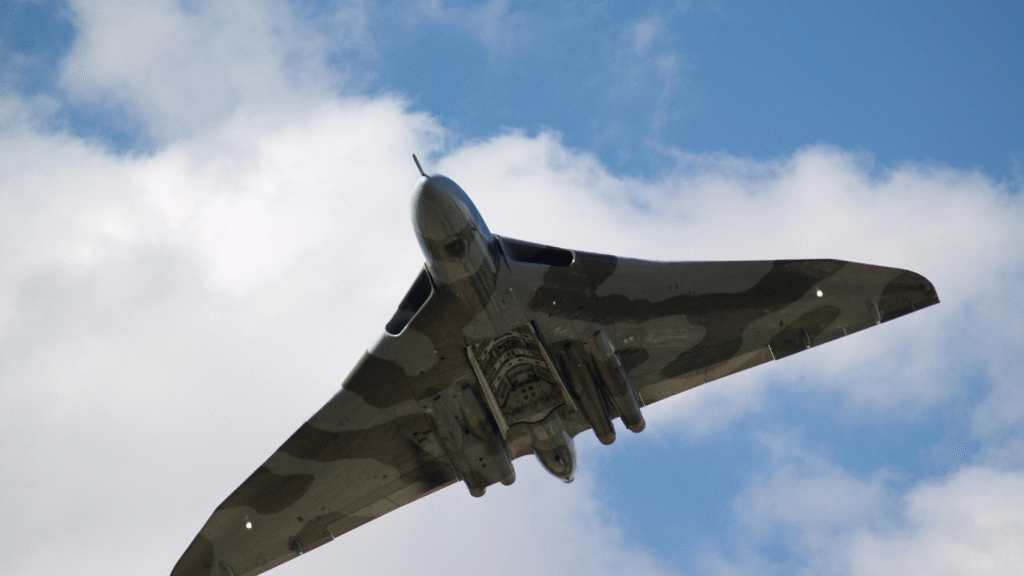The Northrop B-2 Spirit, known as the Stealth Bomber, is the world’s most expensive military aircraft, with a price tag around $2.2 billion per unit. Designed to slip through enemy defenses, this flying wing carries massive firepower, from nuclear bombs to precision-guided munitions. Its high cost, driven by stealth technology and limited production, has sparked debates over its value. As of June 22, 2025, with 19 B-2s in service and recent upgrades, here’s a look at what makes the B-2 so pricey and why it remains a key U.S. asset.
Why the B-2 Costs So Much
The B-2’s $2.2 billion price per plane stems from its advanced stealth features and small production run. Only 21 were built, down from a planned 132, spreading massive development costs—estimated at $55 billion—across fewer units. Each plane’s radar-absorbing materials and unique shape, which scatters radar waves, add to expenses. Building one cost $737 million, but procurement, including spare parts and software, pushed it to $929 million in 1990s dollars, or $2.2 billion today. High-tech systems like fiber-optic networks and upgraded software also drive costs. Recent strikes on Iran’s nuclear sites show its unmatched capability, but critics question its worth compared to other nuclear options. We’ll update you on cost-related developments.
Stealth Technology
The B-2’s stealth comes from its flying wing design and radar-absorbing coatings, making it nearly invisible to radar. These materials are costly to develop and apply, requiring precision engineering. The plane’s low radar cross-section, likened to a bird’s, demands constant maintenance, adding to the price tag. This tech allows strikes in heavily defended areas, as seen in Iran in June 2025.
Limited Production
Originally, 132 B-2s were planned, but the Cold War’s end cut this to 21, raising per-unit costs. Research and development, meant for many planes, was split among fewer, ballooning expenses. Each B-2 carries a chunk of the $2 billion development cost from the 1980s, making it pricier than alternatives like the F-35, at $115 million per unit.
Operating and Maintenance Costs
Running a B-2 is as costly as building one, with annual operating expenses around $1.2 billion per plane. It needs 119 hours of maintenance per flight hour, double that of B-1 or B-52 bombers. Specialized hangars, costing $5 million each, protect its stealth coatings in controlled climates. Fuel, crew, and upgrades, like the 2024 Spirit Realm 1 software, add to the bill. The Air Force spends heavily to keep 19 B-2s mission-ready, with a $7 billion contract awarded to Northrop Grumman in May 2024 for sustainment. These costs fuel debates over whether the B-2’s capabilities justify its price, especially with the B-21 Raider coming. Stay tuned for updates on maintenance budgets.
Maintenance Demands
The B-2’s stealth coatings require meticulous care, needing climate-controlled hangars and frequent touch-ups. Every flight hour triggers 119 hours of checks, from avionics to radar-absorbing surfaces. This labor-intensive process, managed at Tinker Air Force Base, drives up costs. The 2008 and 2022 crashes showed repairs are so expensive that damaged planes were retired.
Annual Operating Expenses
Operating one B-2 costs $1.2 billion yearly, covering fuel, personnel, and upgrades. This dwarfs the B-1’s $9 million or B-52’s $7 million annual costs. The Air Force’s 19 B-2s consume a huge budget share, prompting scrutiny. Posts on X highlight public frustration, with some calling the B-2 a “budget sink” despite its strategic role in missions like Iran.
Recent Upgrades and Investments
The B-2’s price keeps climbing with upgrades to stay relevant. In May 2024, Northrop Grumman got a $7 billion contract to enhance radar detection and software, including the Spirit Realm 1 update for better targeting. These upgrades, vital for facing modern threats like China’s defenses, add to the lifecycle cost, estimated at $55 billion for the program. The B-2’s role in June 2025 Iran strikes, using $20 million GBU-57 bombs, shows its value but also its expense. With the B-21 Raider set to replace it by 2032, the Air Force is balancing upgrades with long-term savings. Critics argue funds could buy dozens of F-35s instead. We’ll update you on new investments and their impact.
Spirit Realm 1 Upgrade
The Spirit Realm 1 update, rolled out in 2024, boosts the B-2’s ability to strike moving targets and evade advanced radars. This software, paired with fiber-optic networks, cost millions to develop. It keeps the B-2 lethal against threats like China’s air defenses, but the price adds to the program’s already hefty budget.
Sustainment Contract
Northrop Grumman’s $7 billion deal in 2024 covers maintenance, logistics, and upgrades for the B-2 fleet. This ensures the 19 planes stay operational until the B-21 arrives. The contract, managed at Whiteman Air Force Base, reflects the high cost of keeping stealth tech functional, with taxpayers footing the bill for decades of service.
Comparisons to Other Aircraft
The B-2’s $2.2 billion price dwarfs other aircraft costs. An F-35 costs $115 million, an F-22 $350 million, and Air Force One $660 million. For one B-2, you could buy 17 F-35s or 40% of a Nimitz-class carrier. The B-21 Raider, at $750 million per unit, is cheaper, partly due to a planned 100-plane run versus the B-2’s 21. The B-2’s stealth and 40,000-pound payload set it apart, as shown in Iran strikes, but critics say ICBMs and submarines offer similar nuclear deterrence for less. Posts on X call it “overpriced,” reflecting mixed sentiment. The B-2’s unique role keeps it in service, but comparisons fuel cost debates. We’ll track updates on B-21 pricing.
B-21 Raider Costs
The B-21, set to replace the B-2 by 2032, costs about $750 million per plane in today’s dollars. Its larger production run and digital design lower costs compared to the B-2’s $2.2 billion. The Air Force plans 100 B-21s, spreading development expenses more evenly, unlike the B-2’s limited run.
Other Military Aircraft
An F-35, at $115 million, is a nuclear-capable stealth fighter but lacks the B-2’s range and payload. The C-17, at $340 million, is a transport plane, while Air Force One costs $660 million. The B-2’s price, driven by stealth and strategic bombing, far exceeds these, sparking questions about its necessity.
Future of the B-2 and Cost Implications
The B-2 will serve until 2032, when the B-21 Raider takes over. With 19 planes left after crashes in 2008 and 2022, the Air Force is investing in upgrades to counter threats like China’s air defenses. The $55 billion program cost, including $1.2 billion annual maintenance per plane, continues to grow. The B-21’s lower $750 million price and larger production run promise savings, but transitioning will be costly. Recent Iran missions highlight the B-2’s unmatched stealth, yet critics argue its price outweighs benefits, given other nuclear options. Public sentiment on X shows frustration over costs but awe at its power. We’ll update you on retirement plans and B-21 rollout impacts.
Transition to B-21
The B-21 Raider, now in testing, will phase out the B-2 by 2032. Its $750 million price and 100-plane order reduce per-unit costs. Transitioning will involve retiring B-2s and training crews for B-21s, adding expenses. The Air Force aims to balance stealth needs with budget constraints during this shift.
Ongoing Debates
The B-2’s $2.2 billion price fuels debates over its value. Supporters cite its role in strikes like Iran’s, while critics favor cheaper alternatives like F-35s or missiles. Congress, wary since the 1990s, may push for cost controls as the B-21 nears. Public views on X reflect this divide, with some calling for smarter spending.



